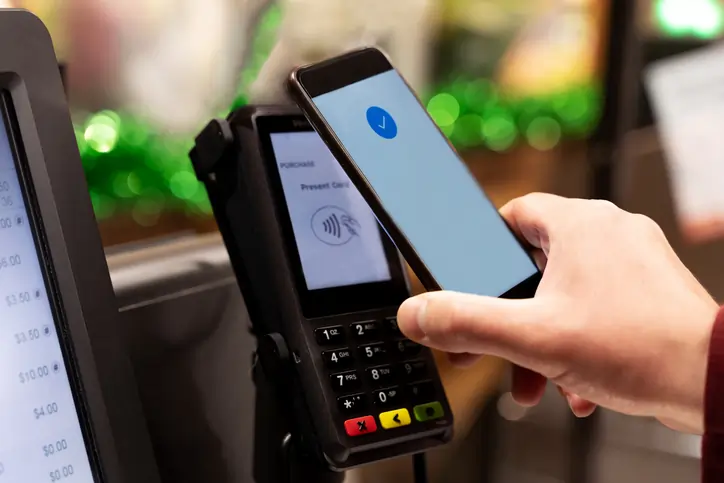

How can retailers and consumers benefit from the convenience, durability and reliability of unattended payment payment solutions? How are payment terminal providers adapting their solutions to emerging trends?
The rise in popularity of unattended payment terminals can be compared to the rise in use of QR codes. They are both payment tools that have been around for a long time, but it wasn’t until the COVID-19 pandemic that we saw an increase in the use of QR codes to pay for services in order to adhere to social distancing.
Since then, we have seen a shift towards cashless, self-service and electronic payment solutions. From car parks, to vending machines, to department stores, and supermarkets, they have become an essential part of urban life. It is estimated that by 2026, there will be 1.5 million self-checkouts installed globally (RBR London forecast), indicating how the convenience they provide has become appealing to the youngest generations.
Thanks in part to the move towards Android technology, this transition has created more access, convenience and control in transactions, but also allowed for merchants to provide better experiences for customers by eliminating physical queues, reducing wait times, and delivering connected services.
As the self-service payment terminal industry has evolved, projected to reach $76.78 billion by 2030 globally, merchants must decide when and how to integrate this Android technology into their businesses to ease services for consumers and stay competitive. 66% of British people believe that self-service transactions make shopping easier. There are four particular areas where there has been a strong need for unattended terminals – EV charging stations, transportation, retailing and grab and go vending.
EV Charging – Keeping Up With Demand
Driven by the goal for sustainability, there has been a large increase in the number of EV vehicles on the road. An increased demand for EV vehicles has resulted in a higher need for chargers as well. In 2022, the UK earmarked £1.6 billion to construct 300,000 charging points across the country, for completion by 2030.
The UK Electric Vehicle (EV) Charging Market is predicted to reach USD 4986 million (EUR 4,389.68) by 2030, a CAGR of 30.7% from 2023 to 2030. These chargers, which can be found in a diverse range of locations like parks, community centers, roadside locations, shopping centers, and apartment complexes for example, have a distinct set of requirements to address the payment needs of its customers.
New regulations, set to be enforced this year, stipulate that all new public charging points 8kW and above installed after November 23, 2024 and all public stations 5àkW and above must offer contactless payment.
Due to the versatile locations of EV charging stations, these unattended payment terminals need to be:
- Robust – able to withstand the environmental elements
- Convenient – reliable terminals that are quick to use
- Secure – able to accept various payment methods including contactless payment safely
Ensuring that these requisites are met guarantees that customers will have a positive experience and will continue to use EV charging payment terminals.
Transportation – Tap and Go
One of the areas where unattended payment terminals have become an essential part of urban life is transportation terminals. Today, we can find unattended payment terminals situated in bus, train, tram, and ferry stations, and even airports, making it easier than ever to pay and board quickly.
While these unattended terminals have existed for some years, they are now more advanced to keep up with a digital world. Payment methods now include ecards, contactless pay, mobile apps, QR codes and even travel cards such as the Oyster card in London, and can now even be stored on mobile phones. The digitalisation of these methods has been shown to reduce ticketing costs by up to 85%, and minimizing paper waste.
The move towards unattended payment methods provides many benefits for consumers including facilitating payment – making it easier to board without worry of delays, removing worry of losing paper tickets, and seamless scanning when boarding – removing the need for staff. In some transportation centers, consumers can even connect ticket machines to their personal mobile devices, eliminating the need to even use an unattended terminal.
The evolution of unattended payment terminals in metropolitan transportation hubs has improved ecological impact, and created a most streamline experience for consumers, easing their transportation experiences.
Do-It-Yourself Retailing
The COVID-19 pandemic drastically increased the use of self-service payment terminals, in order to adhere to social distancing. Since the pandemic, its use has only surged.
This do-it-yourself retailing method not only benefits customers but merchants as well. In the UK, the estimated cost per shopper of using a self-service checkout is only 14 pence, compared with £2.50 for using a till with a checkout operator. These unattended payment terminals are built to be resilient, reliable, and robust, with the ability to connect device software remotely and conduct monitoring and reporting for merchants.
For consumers, this style of shopping creates a more seamless experience, allowing them to quickly scan and pay for their items and be on their way. They also have a variety of payment options at hand, including contactless, mobile, and application payment.
Retailing unattended payment terminals have gone beyond self-checkout registers, customers can now use scanners while shopping and pay directly through an application, cutting their wait times in a queue. Retailers such as Carrefour and Amazon are even developing cashier-less stores, allowing shoppers to simply pick up items and be charged automatically when leaving the store.
While we first began to encounter these unattended terminals in grocery stores, we are now seeing them more frequently in department stores, creating a more personalized shopping experience for consumers. They can provide personal shopping via live camera streams, present catalouges, advertise store promotions, suggest products to shoppers based on their previous purchases, and enroll them in fidelity programs. For merchants, these unattended terminals can assist clerks in checking stock across stores, quickly pull up orders for click and collect orders and provide reporting data for management. These devices are more than just Android POS systems, but rather an essential support for customers and retailers.
Vending – Easy as Grab and Go
We all remember the feeling of being thirsty and finding the closest vending machine to buy a cold soda pop to quench the thirst. Vending machines have been a part of our urban lives for a long time, but gone are the simple coin machines of the past. Today’s vending machines are high-tech, integrated with smart screens that provide an immersive experience for consumers by providing information on goods, tickets and other services.
They can now be found in a diverse range of environments such as transportation hubs like metro stations, entertainment centers like cinemas, healthcare offices, hospitals, university campuses, and even modern apartment building lobbies. In Europe, vending machines are estimated to reach $27.21 billion by 2028.
In today’s era, vending machines have no limit, selling everything from soda cans to make-up. They now have the capability to be customized to provide frozen, chilled and hot food products, and sell merchandise such as electronics, sportswear and more.
These unattended terminals provide a great convenience for customers, accepting various payment solutions such as mobile wallets, QR codes, and contactless payment. Merchants are even able to create fidelity programs, so the devices can remember preferences and link them to rewards programs.
Vending machines today are now able to meet the needs of consumers more than what was imagined before. Their easy accessibility makes it possible for consumers and merchants to benefit from seamless services and products.
Movement Forward
In an increasingly connected world where contactless payment is becoming a large part of daily life, Android unattended payment terminals provide a benefit for consumers and retailers in a diverse range of settings, from EV charging stations to self-service kiosks and vending machines.
As these terminals evolve, so is the technology. It can now provide secure, reliable, faster payment on a larger scale, to keep up with an increasingly advancing technological world. The Android devices of today are simple, require less parts, provide all-in-one services, making it easier to repair them remotely, easily replaceable and utilize recyclable parts. They also reduce paper waste and use less energy, making room for more greener devices.
A Seamless Future
Android payment technology has emerged as the preferred payment solution thanks to its all-in-one functionality, flexibility and ecological impact. This market is only evolving, and as it does, so do the unattended payment devices.
Buyers today are accustomed to going solo at the point of sale, and have transitioned to cashless and digital transactions. As more advanced features such as biometrics and QR payment are rapidly becoming integrated into our daily lives, we will surely begin to see these features being built into Android unattended devices as well.
These new advancements are not only helping merchants adapt to the changing fintech climate, but they are also helping solve the challenges of accepting payments efficiently on a large scale. These changes also benefit consumers, who are getting a more seamless experience thanks to the reduction of physical queues and wait times, and receiving more connected digital services.
Additionally, the rapid evolution of this market has become a challenge for payment terminal providers, who now must innovate their devices, including hardware and software, in order to keep up with the changing fintech climate.
Unattended Android payment services are quickly setting the standard globally for reliable and quick payment options on a large scale. As our world advances forward, we will surely begin to see exciting advancements such as biometrics and artificial intelligence becoming integrated into this Android technology as well.
About Castles Technology
With 30 years’ experience in the global payments market, Castles Technology has established itself as one of the world’s top five manufacturers of Android acceptance payment terminals, offering secure, reliable and transparent solutions.
The payment applications developed by the company are aimed at merchants in the finance, retail, hospitality and transport sectors, among others. Castles Technology works in partnership with over 1,000 banks, merchants, FinTechs, acquirers, ISVs and PSPs, deploying millions of payment terminals worldwide for retailers of all sizes such as Total Energies, Adyen and Nexi.
The US headquarters are based in Atlanta, a booming metropolis for payments and financial technology. Global headquarters are in Taipei City. Castles also has regional offices in France, Spain, Italy, Singapore and Japan.


